Here we list all the new books about women artists that have come to our attention, published in the third quarter of this calendar year. Descriptions are drawn from the blurb on the publisher’s website. If you know of other titles that should be on this list, please let us know by comment or by email (Erika@artherstory.net).
Graphic Novels
- Seen: Edmonia Lewis, written by Jasmine Walls and illustrated by Bex Glendining. Publisher: Boom Studios, distributed via Simon & Schuster, 2020; Series: True Stories of Marginalized Trailblazers.
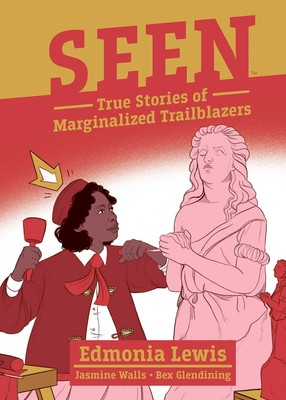
Meet Edmonia Lewis, the woman who changed America during the Civil War by becoming the first sculptor of African-American and Native American heritage to earn international acclaim. Jasmine Walls and Bex Glendining present the true story of courage, determination and perseverance through one of America’s most violent eras to create true beauty that still reverberates today.
- Kusama: The Graphic Novel, by Elisa Macellari. Publisher: Laurence King, 2020.

From rural Japan to international icon, Yayoi Kusama has spent her remarkable life immersed in her art. Follow her incredible journey in this vivid graphic biography which details her bold departure from Japan as a young artist, her embrace of the buzzing New York art scene in the 1960s, and her eventual return home and rise to twenty-first century super-fame.
Fiction
Angelica, Paintress of Minds, by Miranda Miller. Publisher: Barbican Press, 2020.

The sparky, true life novel tells the life story of a woman who battled misogyny to become one of the greatest artists of the eighteenth century. Angelica Kaufman is so successful that when she comes to England as a young woman in 1766 a word is coined: Angelicamad. After fifteen triumphant years in London she is terrified (as a devout Catholic) by the Gordon Riots and returns to Italy. In her studio, Angelica stares at her self portraits and relives her journey from a poor background to international fame. She draws us into her fascinating past through the portraits she has painted of her friends, including Antonio Canova, Germaine de Stael, Emma Hamilton and Goethe.
For young readers
- Beatrix Potter, Scientist, by Lindsay H. Daniels, illustrated by Junyi Wu. Publisher: Albert Whitman, 2020.

Everyone knows Beatrix Potter as the creator of the Peter Rabbit stories. But before that, she was a girl of science. As a child, Beatrix collected nature specimens; as a young adult, she was an amateur mycologist presenting her research on mushrooms and other fungi to England’s foremost experts. Like many women of her time, she remained unacknowledged by the scientific community, but her keen eye for observation led her to an acclaimed career as an artist and storyteller. A beloved author is cast in a new light in this inspiring picture book story.
Non-fiction
- The Short Story of Women Artists: A Pocket Guide to Key Breakthroughs, Movements, Works and Themes, by Susie Hodge. Publisher: Laurence King, 2020.

The Short Story of Women Artists tells the full history—from the breakthroughs that women have made in pushing for parity with male artists, to the important contributions made to otherwise male-dominated artistic movements, and the forgotten and obscured artists who are now being rediscovered and reassessed. Accessible, concise and richly illustrated, the book reveals the connections between different periods, artists and styles, giving readers a thorough understanding and broad enjoyment of the full achievements that female artists have made.
- The Life and Work of Rosalba Carriera (1673–1757): The Queen of Pastel, by Angela Oberer. Publisher: Amsterdam University Press, 2020.

This book is the first extensive biographical narrative in English of Rosalba Carriera. It is also the first scholarly investigation of the external and internal factors that helped to create this female painter’s unique career in eighteenth-century Europe. The author documents the difficulties, complications, and consequences that arose then—and can also arise today—when a woman decides to become an independent artist. This study contributes a new, in-depth analysis of the interplay between society’s expectations, generally accepted codices for gendered behavior, and one single female painter’s astute strategies for achieving success as a famed artist.
Read Karen Chernick’s review of this book in Hyperallergic; Christopher Baker’s review for Apollo Magazine; and Melissa Percival’s review for Journal18.
- Angelica Kauffman, edited by Bettina Baumgärtel, contributions by Helen Valentine et al. Publisher: Hirmer; distributed in North America by the University of Chicago Press, 2020.

Angelica Kauffman explores the larger-than-life myth of Angelica Kauffman (1741–1807), which arose even while she was still working. Her remarkable life and work are presented here through beautiful reproductions of more than one hundred of her best paintings and drawings, including many never before seen. The book pays particular attention to Kauffman’s impact in England, where she was the first female member of the Royal Academy of Arts. The book stakes a claim for the artist as a pioneering history painter, fashionable portraitist, and champion of a new ideal of masculinity.
- 50 Women Sculptors, with an introduction by Dr Joanna Sperryn-Jones. Publisher: Aurora Metro, 2020.
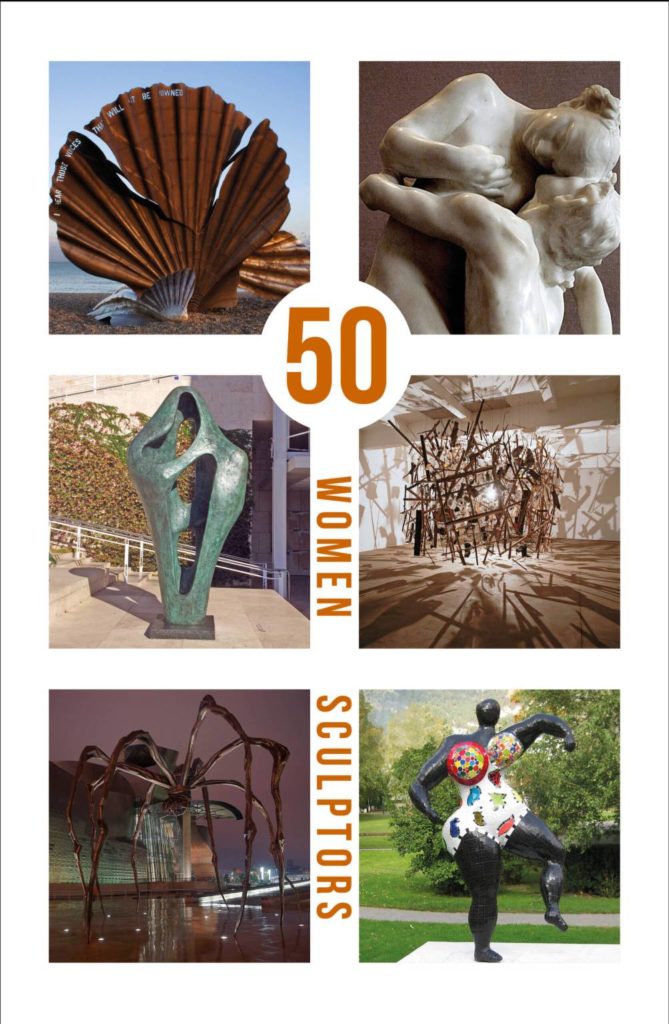
50 Women Sculptors challenges perceptions that sculpture is a male pursuit. It helps readers to understand the work and lives of dozens of women sculptors—significant artists from the past as well as those working in the exciting and varied world of sculpture today. The first book to give an overview of women sculptors and insight into a range of contemporary sculptors’ practices, it features dozens of colour photographs alongside the words of the artists themselves.
- Katharina Grosse, by Gregory Volk. Publisher: Lund Humphries, 2020.
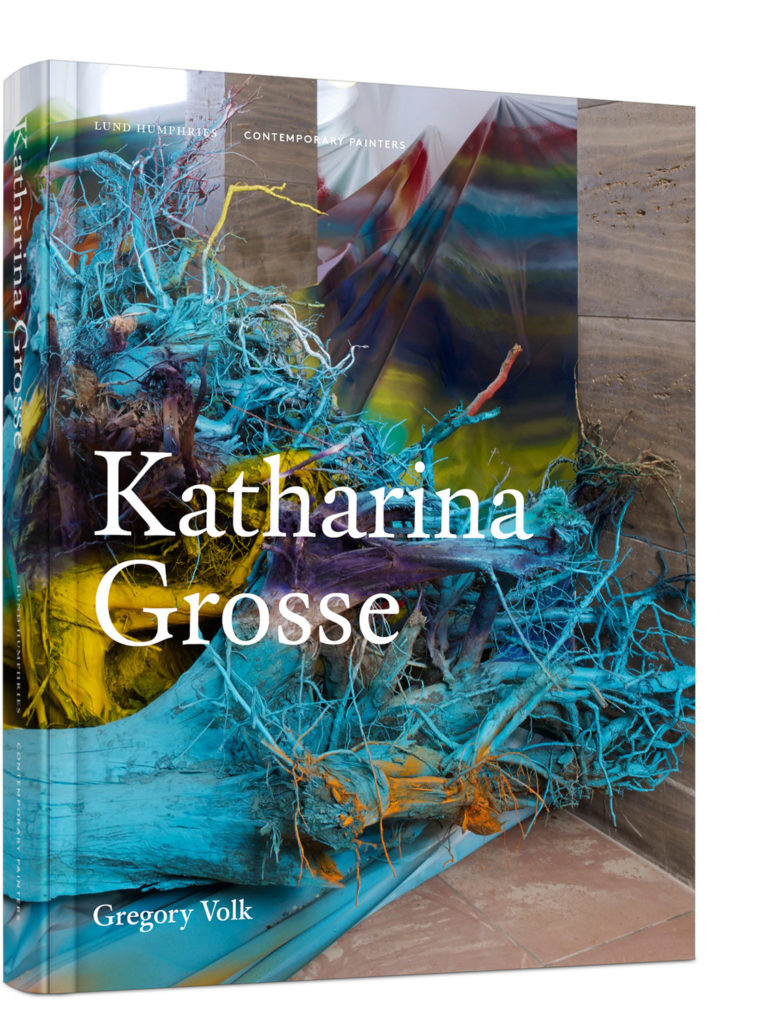
This is the most comprehensive monograph to date on the innovative abstract site-related installations of German artist Katharina Grosse (b.1961). Grosse’s daring move from the canvas into both architectural space and the landscape, with her signature colourful spray paintings, has resulted in a deeply compelling body of work. From a Toronto airport to a decrepit beach structure on the New York coast and the spaces of major museums worldwide, Grosse’s works present thorough, if often temporary, carnivalesque transformations of extant places and situations.
London’s Women Artists: A Talented and Decorative Group, by Mengting Yu. Publisher: Springer Publishing, 2020.

This book takes its starting point from Alicia Foster’s article “Gwen John’s Self-Portrait: Art, Identity and Women Students at the Slade School,” published in 2000, where the expression “a talented and decorative group” was coined to describe common attitudes towards women artists in the late 19th and early 20th century London. This pejorative attribution strongly implied a status less significant to that of their male counterparts. The author challenges this statement’s basic tenet by casting a wide net in examining women’s art education from the Slade School of Fine Art, through to the role of its graduates within a selection of London’s exhibition groups, societies and publications. This book also reconstructs “from scratch” the role of the Women’s International Art Club (WIAC), hitherto entirely overlooked in art historical studies of the era.
- Gillian Carnegie, by Barry Schwabsky. Publisher: Lund Humphries, 2020.
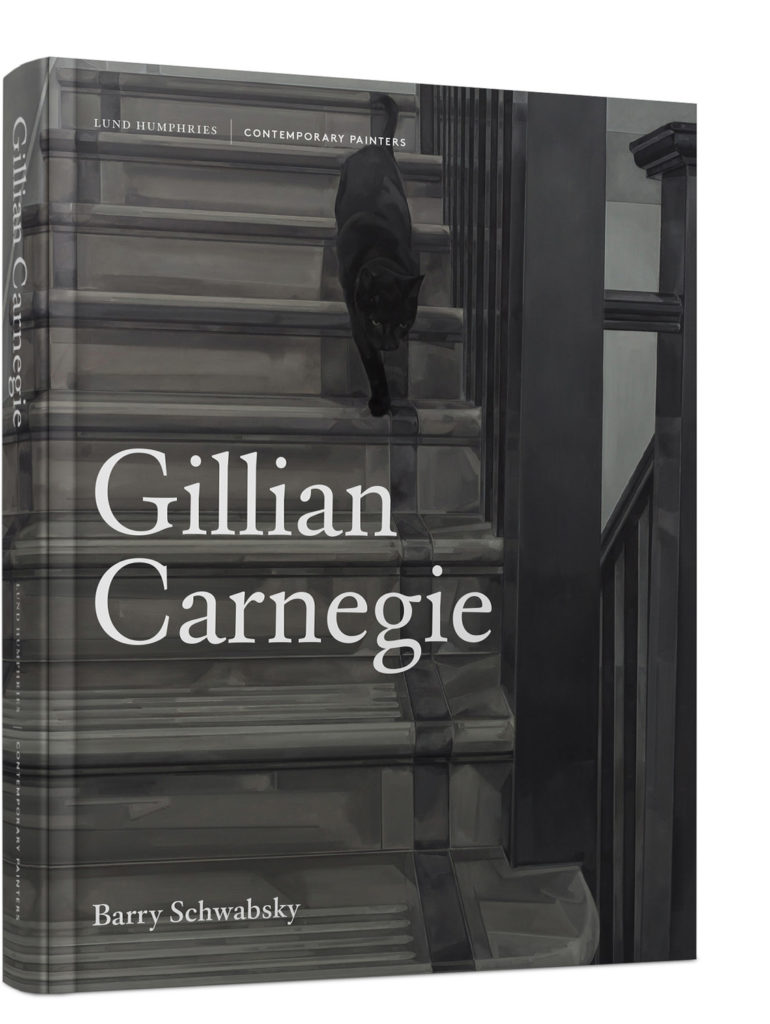
Though the singular paintings of British artist Gillian Carnegie (b.1971) have been exhibited and discussed extensively for nearly two decades, this is the first substantial publication on her work. Barry Schwabsky shows Carnegie’s work to be explicitly analytical and systematic, yet oblique in its reexamination of traditional painting genres such as still life, landscape, portraits, and the nude. Yet he makes clear that her impulse to resuscitate these categories is not simply an exercise in formalism, historicism, academic reverence, postmodern pastiche, or nostalgia. And far from being without a subject, far from having no story to tell, Schwabsky helps us to understand that Carnegie paints not to communicate the subject and the story, it but to conceal it, to hold it incommunicado.

- Karen LaMonte, with text by Arthur Danto, Brett Littman, Laura Addison, Steven A. Nash, and Lucy R. Lippard. Publisher: Rizzoli Electa, 2020.
This first major monograph on feminist sculptor Karen LaMonte features her hauntingly beautiful works that draw upon the power of the sublime. In this definitive look at a vital contemporary artist, essays by award-winning authors frame LaMonte’s work in the context of female identity, music, art history, and science, placing her alongside other contemporary sculptors who have adopted the human body as an vehicle for expressing the human condition.
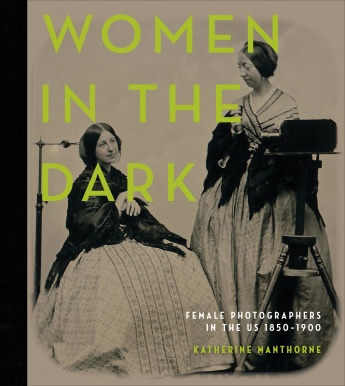
- Women in the Dark: Female Photographers in the US, 1850–1900, by Katherine Manthorne. Publisher: Schiffer Publishing, 2020.
Covering two generations of photographers ranging from New York City to California’s mining districts, this study goes beyond a broad survey and explores individual careers through primary sources and new materials. Profiles of the photographers animate their careers by exploring how they began, the details of running their own studios, and their visual output. The photos featured vary in form—daguerreotype, tintype, carte de visite, and more—and subject, including civil war portraits, postmortem photography, and landscape photography. This welcome resource fills in gaps in photographic, American, and women’s history, and convincingly lays out the parallels between the growth of photography as an available medium and the late 19th-century Women’s Movement.
Read a review of this book in Publishers Weekly.
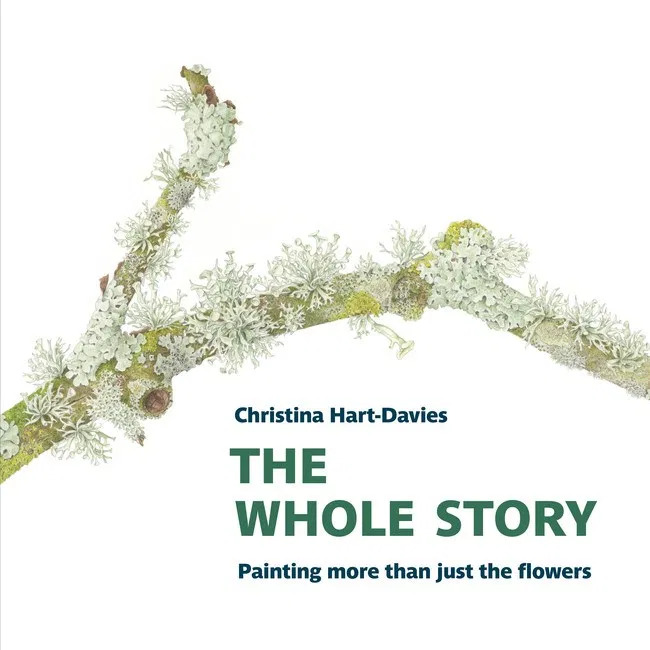
- The Whole Story: Painting more than just the flowers, by Christina Hart-Davies. Publisher: Two Rivers Press, 2020.
This beautiful retrospective overview of the work of award-winning botanical artist Christina Hart-Davies includes examples of Christina’s illustration work as well as exhibition paintings. The book interweaves illustrations and artworks—more than 100, in full color—with commentary from the artist about the plants, the inspiration behind the works and the art techniques used.

- Bridget Riley: The Complete Prints, 1962–2020, by Bridget Riley, Craig Hartley, Lynn MacRitchie, Robert Kudielka, Alexandra Tommasini, and Rosa Gubay. Publisher: Thames & Hudson, 2020.
Bridget Riley has made screenprints throughout her career, extending the principles of her paintings into a new, reproducible medium. Bringing together the complete, updated inventory of this substantial body of work, this volume explores Riley’s development as a printmaker and her relationship to the screenprint medium. Newly revised, updated and designed, this catalogue raisonné richly illustrates Bridget Riley’s graphic work in a larger, enhanced format. A co-publication with The Bridget Riley Art Foundation, the volume also benefits from supplemental material including an artist biography and selected solo and group exhibition history.
- Modernist Wastes: Recovery, Re-Use and the Autobiographic in Elsa von-Freytag-Lorighoven and Djuna Barnes, by Caroline Knighton. Publisher: Bloomsbury, 2020.

Modernist Wastes is a profound new critical reflection on the ways in which women writers and artists have been discarded and recovered in established definitions of modernism. Exploring the collaborative auto/biographical writings of Djuna Barnes and the artist, poetic and Dada performer Baroness Elsa von Freytag-Loringhoven, Caroline Knighton reveals how these very processes of discarding, recovery and re-use can open up new ways of understanding a distinctively female modernist artistic practice. Illustrated throughout with artworks, original letters and manuscript facsimiles, the book draws on new archival discoveries to place the feminist recovery of neglected female voices at the heart of our understanding of modernist and avant-garde literary culture.
- She Votes: How U.S. Women Won Suffrage, and What Happened Next, by Bridget Quinn; with a Foreword by Nell Irvin Painter. Publisher, Chronicle Books 2020.
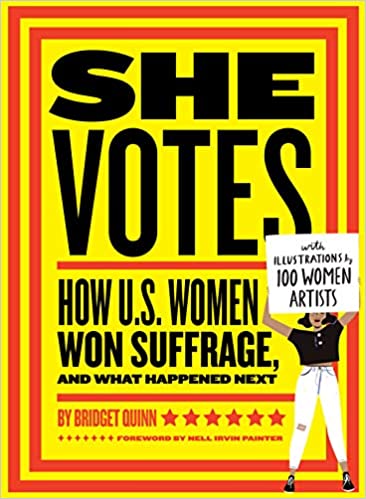
She Votes is an intersectional story of the women who won suffrage, and those who have continued to raise their voices for equality ever since. From the first female Principal Chief of the Cherokee Nation to the first woman to wear pants on the Senate floor, author Bridget Quinn shines a spotlight on the women who broke down barriers. This deluxe book also honors the 100th anniversary of the Nineteenth Amendment with illustrations by 100 women artists. She Votes is a refreshing and illuminating book for feminists of all kinds.
Read reviews of this book in Publishers Weekly and Booklist.
- Criminal Quilts, by Ruth Singer. Self-published, 2020.
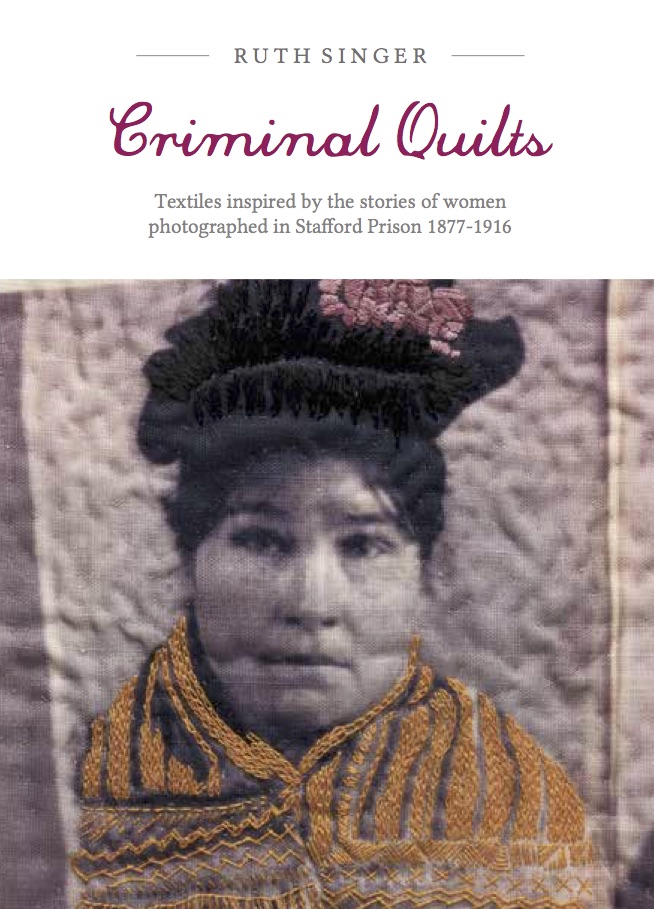
Criminal Quilts is an art & heritage project inspired by photographs and documents relating to women held in Stafford Prison 1877–1916, created and developed by Ruth Singer in partnership with Staffordshire Record Office. Following a period as Artist in Residence at Staffordshire Record Office, Singer has created a touring exhibition and book of the project.
The exhibition is currently (Fall 2020) on display at the Shire Hall Dorset. Dorchester (4th September–8th November 2020). For future tour locations and dates, see this link.
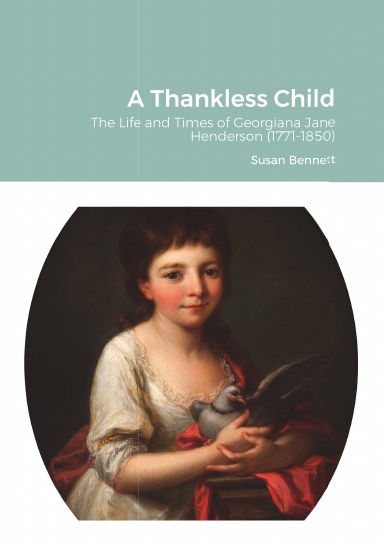
A Thankless Child: The Life and Times of Georgiana Jane Henderson (1771–1850), by Susan Bennett. Publisher: Lulu, 2020.
Georgiana Henderson, née Keate, was an English painter; in 1791, she exhibited four pictures at the Society of Artists. She was known to actors, actresses, artists, naval men, emigres and even a South Sea islander and visited England’s spa towns. She had her portrait painted by Angelica Kauffman RA and John Russell RA. This book provides a flavour of a period of history known as the Enlightenment through the eyes of a young girl born in 1771.
New editions
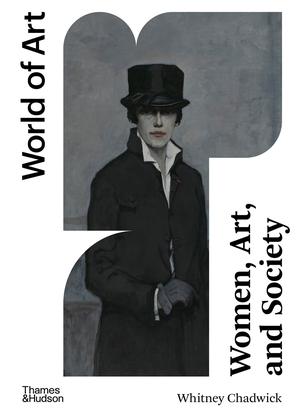
- Women, Art and Society, by Whitney Chadwick. Epilogue by Flavia Frigeri. Publisher: Thames & Hudson.
This revised (sixth) edition features a completely redesigned interior and full-color illustrations. With a new preface and epilogue from this emerging authority on the history of women artists, curator and professor Flavia Frigeri, this revised edition continues the project of charting the evolution of feminist art history and pedagogy, revealing how artists have responded to new strategies of feminism for the current moment.
- Artemisia Gentileschi and Feminism in Early Modern Europe, by Mary D. Garrard. Publisher: Reaktion Books. Originally published on Kindle in April 2020; issued in hardback format, July 2020.

- Life Stories of Women Artists, 1550–1800: An Anthology, by Julia K. Dabbs. Publisher: Routledge. Originally published in 2010; issued in ebook format, September 2020.
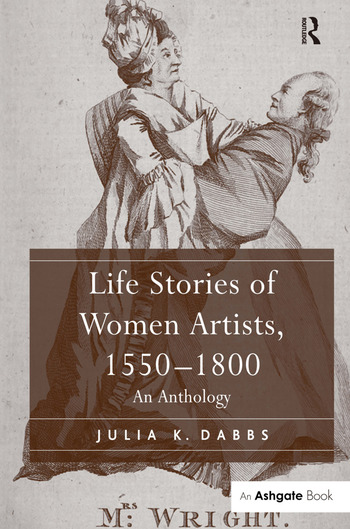
Previous Art Herstory posts on books about women artists
New Books About History’s Women Artists | July–Sept 2021
ew Books About History’s Women Artists | Apr–Jun 2021
New Books About History’s Women Artists | Jan–March 2021
New Books about History’s Women Artists | Oct–Dec 2020
New Books About History’s Women Artists | Apr–Jun 2020
New Books About History’s Women Artists | Jan–Mar 2020
Ten Intriguing Books About Remarkable Women Artists, a guest post by Carol M. Cram





Hi, I wanted to be sure you knew of a monograph published this fall by Rizzoli’s Electa division about living artist Karen LaMonte. More info about the book and LaMonte on her website: https://www.karenlamonte.com/
I would be happy to send you more detailed information in the event you are compiling a GIFT GUIDE or would like an interview in advance of Women’s History month.
Thank you in advance for your consideration,
Tara
Thank you, Tara. I did not know about the Karen LaMonte book, but I have now added it to the July-Sept 2020 quarterly books update. I appreciate your alerting me to this publication!